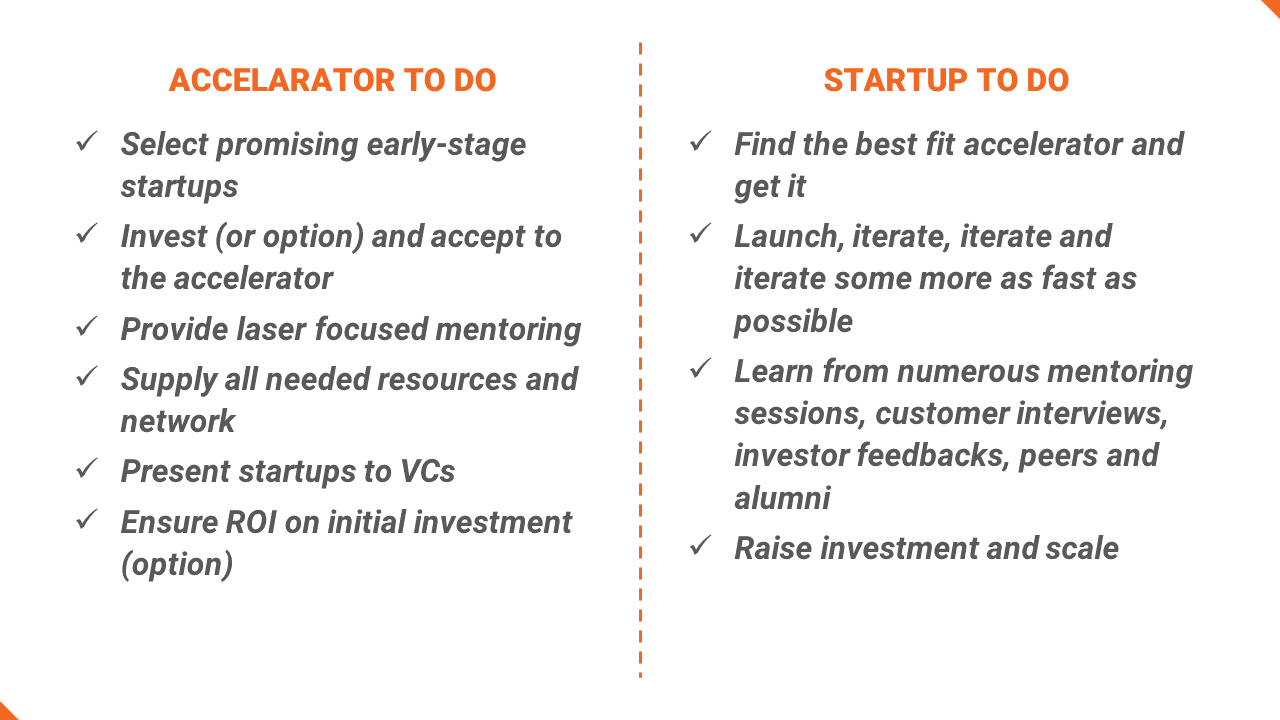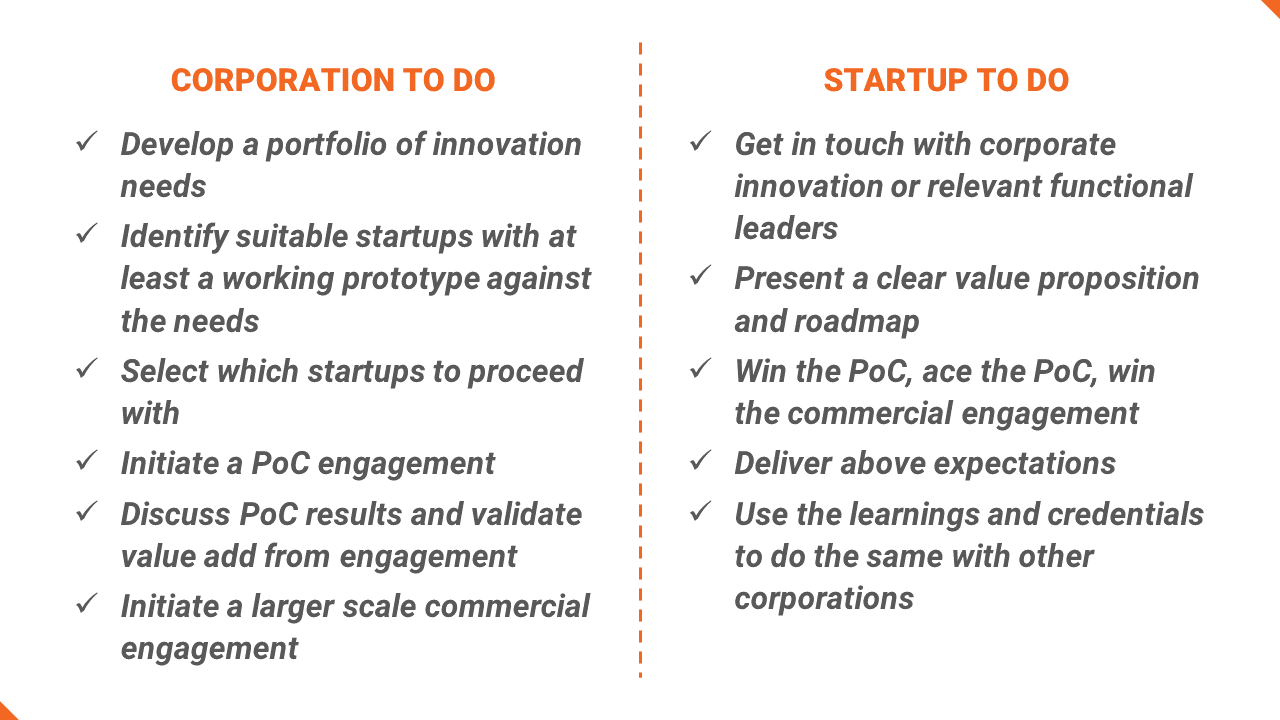
Cover photo by Ann H
Corporate accelerator program designs can vary depending on the organization's needs and objectives.
In this article, we will list the facts about accelerator programs as well as the inefficiencies that will help save time for both startups and corporations. (Workinlot References)
Corporate accelerators fuel corporate innovation by harnessing the risky bets of startups. Startups benefit from corporate expertise, networks, and resources to accelerate growth.
Here are some key success definitions for these programs:
- Establishing strategic partnerships
- Co-creating new business models
- Integrating corporate value propositions into new value propositions of startups
- Securing early-stage funding and scaling the startup
- Fostering an innovative corporate culture

Facts about corporate accelerators
Corporate accelerators usually pick startups that are just getting started and look promising. The idea is to work together with these startups as they grow and create shared goals.
Startups that have already found customers and are growing fast should focus on getting bigger, not new ideas. So, corporate accelerators might not be the best fit for startups that are already successful. (Unlocking B2B Startup Value: A Stage-by-Stage Guide)
To mitigate the risk of investing in early-stage startups, corporations can secure investment or option agreements.
The program offers tailored mentorship and networking to support the startup's growth.
Startups can collaborate on projects with internal or external corporate clients. We advise using a PoC-based approach to measure the mutual value created. (How PoCs Help Businesses Unlock Startup Potential)
The accelerator's clients are typically CVCs or venture capital firms.
The ability to objectively present PoC data and the startup's progress during the program will strengthen the investment thesis. (PoC Data and Business Intelligence)
If an investment firm invests in the startup participating in the program, it increases the value of the option held by the accelerator.
Ideally, these programs should be completed within 3-6 months. Longer programs can hinder the startup's development.
As an output of the program, the corporation develops the startup's solution, moving it toward product-market fit.
We can list various success metrics for this goal, including:
Establishing successful strategic partnerships to test new business models and technologies, integrating corporate value propositions into the startup's new business model, accessing the financial gains of early-stage investment, scaling the startup solution, and regularly exposing company employees to an innovative culture.

The human capital and business intelligence gains from accelerators are often overshadowed by the startup's success.
Well-designed corporate accelerators offer unexpected benefits to employees. (Building a Culture of Innovation - Platin Business Magazine / February 2024)
fter these programs, we've seen employees create new solutions, improve processes, and even start their businesses.
We've also found that working with people from different companies helps us learn new things.
Including other companies in the program creates new opportunities, like joint investments, testing new ideas together, and sharing the risks of innovation.
In our programs, we make sure startups and other companies meet regularly to share ideas and learn from each other. (Workinlot Ecosystem Design)
Corporate accelerator inefficiencies
Having fixed start and end dates for accelerator programs seems counterintuitive.
While startups may need a graduation timeline, applications should be ongoing.
We cannot set deadlines for emerging needs and opportunities. Instead, we should focus on how to manage incoming demand and support it with digital tools.
Speaking of focus, a common inefficiency we observe is overly broad accelerator programs. Developing resources for every focus area is quite challenging. Having several technology or industry focuses in an accelerator program may indicate a lack of proper support, goals, and processes.
To focus on goals and benefit from a broad opportunity pool, programs, and processes must be measurable. An unmeasurable process cannot be managed.
Transparent and measurable success criteria mean not neglecting to track metrics and knowing the return on investment in the program. This is especially important in times when budgetary efficiency is a priority.
To measure value, we can reference the success indicators we listed earlier. How many startups have we been able to collaborate with internally? How have our new product, revenue, market, or user acquisition metrics changed? Is there a significant increase in intrapreneurship projects? What are the financial returns on acceleration options? etc.
The metrics tracked and the innovation data captured help facilitate achieving various strategic goals in the future. Otherwise, it becomes difficult to find data on past acceleration programs and draw meaningful conclusions.
How can Workinlot boost corporate accelerators?
We design and execute the startup validation processes (PoC) for corporate clients. (Starting and Iterating: Corporate Open Innovation Design)
Through collaborative efforts, most companies we've worked with have developed unique open innovation strategies and established innovation teams.
This shared experience has enabled them to launch corporate venture capital funds, open innovation platforms, and venture builder initiatives.